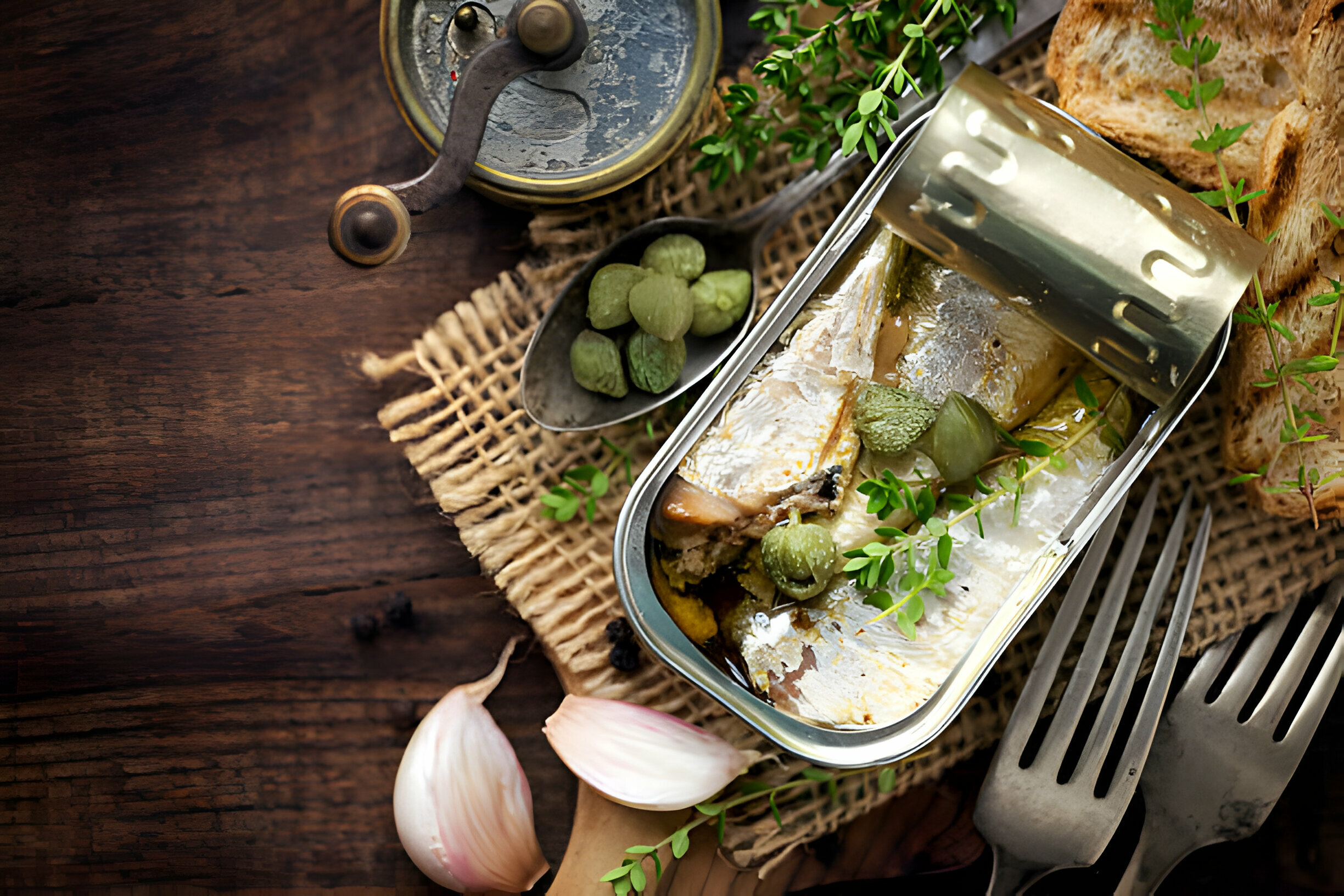Step into the world of tinned fish where each can holds a sea of possibilities. You’re about to dive into the depths of what makes this pantry staple a go-to for many. From its convenience to sustainability, you’ll uncover why tinned fish has become a beloved choice for meals. Get ready to explore the ocean’s bounty packed neatly in cans as we unravel the secrets behind ‘What Is Tinned Fish?’
Types of Tinned Fish
There’s a wide variety of tinned fish available, including tuna, sardines, and mackerel. When it comes to tuna varieties, you can find options like albacore, skipjack, or yellowfin packed in cans for convenience. Salmon options are also popular for their rich flavor and omega-3 benefits. Sardine benefits are plentiful; they are an excellent source of calcium and vitamin D. Mackerel uses go beyond just being a tasty snack; they can be added to salads or sandwiches for an extra burst of flavor. If you’re feeling adventurous, try out some anchovy recipes that include pasta sauces or Caesar salad dressings for a savory kick in your dishes!
Benefits of Tinned Fish
You can enjoy a convenient source of omega-3 fatty acids and protein by incorporating these products into your diet. Tinned fish offers a range of benefits that make it an excellent addition to your meals:
- Nutritional Value
- Rich in omega-3 fatty acids for heart health
- High-quality protein for muscle repair and growth
Tinned fish also boasts the following advantages:
- Convenience Factor
- Ready-to-eat option for quick meals
- Easy storage and portability for on-the-go snacking
With its long shelf life, versatility as an ingredient in various dishes, and being a budget-friendly option, tinned fish is a smart choice to enhance your overall diet.
How Tinned Fish Is Processed
Processing methods typically involve cleaning, cooking, and canning seafood products for preservation and distribution. Fish preservation is crucial in maintaining the quality of tinned fish. The canning process not only ensures shelf stability but also helps in retaining the flavor of the fish. By sealing fish in a can, its nutritional content is safeguarded, providing you with a convenient source of essential nutrients. The careful balance between processing and preserving the fish guarantees that when you open a tin of fish, you are met with freshness and taste. This method allows you to enjoy seafood without compromising on quality or flavor while reaping the health benefits it offers.
Tinned Fish Vs Fresh Fish
When comparing tinned fish to fresh fish, consider the differences in taste and texture between the two options. Tinned fish often has a distinct flavor due to the preservation process, while fresh fish offers a more delicate taste and firmer texture. Here are some points to help you navigate your choice emotionally:
- Storage Options
- Buying fresh fish means you need to consume it quickly before it spoils.
- Taste Comparison
- Fresh fish tends to have a cleaner taste compared to tinned varieties.
Considering factors like convenience, nutritional value, and cost effectiveness can also influence your decision when choosing between tinned and fresh fish for your next meal.
Popular Tinned Fish Brands
Exploring various popular brands can help you find the ideal canned seafood option for your preferences. When it comes to tinned fish flavors, you can discover a wide range of choices, from classic options like tuna and salmon to more exotic varieties like sardines or mackerel. Pay attention to tinned fish packaging; some brands offer easy-open lids for convenience, while others may come in environmentally friendly materials. Proper tinned fish storage is essential to maintain freshness; store them in a cool, dry place away from direct sunlight. Experimenting with tinned fish recipes can introduce new flavors into your meals, enhancing their taste and nutritional value. Lastly, consider tinned fish sustainability by choosing brands that prioritize responsible fishing practices and eco-friendly packaging.
Tinned Fish Recipes
For a quick and delicious meal, try incorporating canned seafood into your favorite recipes. Canned seafood is a versatile ingredient that can elevate your dishes while being budget-friendly and convenient to have as pantry staples. Here are some ideas to inspire you:
- Flavor Pairings
- Mix canned tuna with mayo, lemon juice, and herbs for a zesty tuna salad.
- Combine canned sardines with tomatoes, olives, and capers for a Mediterranean-inspired pasta sauce.
With these simple yet flavorful combinations, you can create satisfying meals in no time. Let the convenience of canned seafood help you whip up tasty dishes without breaking the bank.
Health Considerations With Tinned Fish
Now that you’ve explored some tasty tinned fish recipes, let’s dive into the health considerations when consuming these convenient pantry staples. When choosing tinned fish, it’s essential to be aware of various factors such as mercury levels, omega-3 content, BPA concerns, sodium levels, and overall nutritional value. Check out the table below for a quick comparison:
| Nutrient | Levels |
|---|---|
| Mercury Levels | Low in most varieties |
| Omega 3 Content | High |
| BPA Concerns | Some cans may contain BPA lining |
| Sodium Levels | Varies depending on preparation |
| Nutritional Value | Rich in protein and healthy fats |
Being mindful of these elements can help you make informed choices regarding your tinned fish consumption for a balanced diet.
Sustainability of Tinned Fish Industry
Concerns surrounding the sustainability of the canned seafood industry are growing due to overfishing and environmental impact. As a consumer, you play a crucial role in shaping the future of this industry. Consider the following:
- Environmental Impact
- Destruction of marine habitats
- Threat to endangered species
- Fishing Practices
- Unsustainable methods harming marine ecosystems
- Bycatch issues affecting non-targeted species


